Since 1950, when 1.7 million metric tons of plastic was first produced worldwide, we’ve managed to pollute the entire planet with it: the oceans, fresh water systems, every continent, even the air. While you may envision plastic water bottles and bags floating in an ocean, even the stuff you can’t see could be killing marine life — and scientists are working to understand the health implications of microplastics on people, animals and Earth.
That was the message scientists shared during a panel discussion titled “Plastic: Land to Sea Connections,” held in November. Whether it comes as microscopic fibers emitted by your washer and dryer, or as larger items of trash, plastic hitches a ride, traveling through storm systems, streams, rivers and ultimately into estuaries and oceans, the panelists said.
“We, as a species, have an addiction to plastic,” said Branson W. Ritchie, a Distinguished Research Professor and Director of Technology Development and Implementation in the UGA New Materials Institute. “That plastic doesn’t biodegrade; it just breaks down. It doesn’t stop until it gets to some irreducible size, but we don’t know yet what that size is. As it gets smaller, it gets more and more dangerous to animals. A plastic water bottle, plate or fork breaks down to hundreds of millions of even smaller pieces and will kill some animal that eats it, but the plastic is still there to be eaten and kill again.”
Plastic may take decades or hundreds of years to degrade, but it persists as fragmented pieces that can become airborne and escape water filtration systems, the panelists said. Ritchie emphasized that plastic waste is killing whales, dolphins, birds and sea turtles in horrible ways, including choking, suffocation, gastrointestinal impactions, starvation and secondary systemic infections (called septicemia).
“Oceans are the ultimate transporter of plastic,” said Jenna Jambeck, an associate professor of waste management in the College of Engineering who has focused on plastics since about 2001. Jambeck directs the Center for Circular Materials Management (C2M2) under NMI. She also co-developed the Marine Debris Tracker app, used globally to report the location and type of debris found. Of the 8.3 billion metric tons of plastic produced in 2017, less than 10 percent was recycled; some 8 million metric tons of plastic enters the ocean annually, she said.
Jambeck emphasized that it will take multiple solutions to rid the planet of its plastics problem. In some countries, bottled water is the only source for clean drinking water, and, many localities have no waste management system. Through the NMI’s C2M2 and utilizing Green Engineering principles, Jambeck works with organizations, governments and businesses around the world to promote collecting and containing plastic, preventing and redesigning waste systems, and converting existing plastic into other products before it becomes waste.
But greater awareness about the problem and a collective goal to be less reliant on plastic are key catalysts for global change, noted the panelists.
Panelist Katy Smith, the water quality program coordinator with UGA Marine Extension and Georgia Sea Grant, teaches school children, college students and adults about the hazards of things they may view as benign — like balloons, straws and cigarette butts. “Marine debris is everyone’s problem. We can all take part in the solutions,” Smith said.
Maia McGuire, an extension agent with the University of Florida IFAS Extension and Florida Sea Grant, launched the Florida Microplastic Awareness Project in 2015. Volunteers collect and analyze coastal water samples from around the state, and teach others how to reduce their plastic dependence. Program participants are encouraged to take a pledge (http://bit.ly/plasticpledge) aimed at reducing the amount of plastic waste they generate. She follows up with program participants to find out what changes they have made and is already encouraged by her findings. “The more people learn, the more likely they are to make a change,” McGuire said.
The event was organized by Rebecca Atkins, a PhD student in the Odum School of Ecology, and sponsored by the UGA Marine Extension and Georgia Sea Grant, University of Florida IFAS Extension and Florida Sea Grant, the UGA New Materials Institute, and the River Basin Center.
Story by Kat Yancey Gilmore, Senior Science Writer and Editor for the New Materials Institute

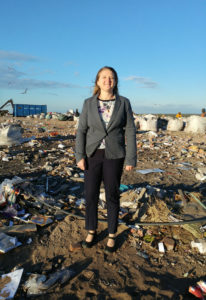
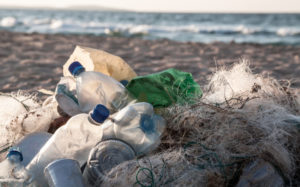
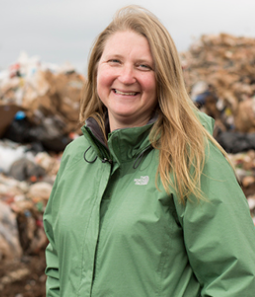 Right before Jenna Jambeck was returning to school to get her doctorate in environmental engineering in 2000, racing captain and oceanographer Charles Moore showed the industrialized world that its obsession with plastic had a cost.
Right before Jenna Jambeck was returning to school to get her doctorate in environmental engineering in 2000, racing captain and oceanographer Charles Moore showed the industrialized world that its obsession with plastic had a cost.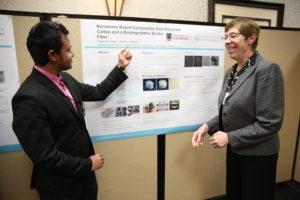
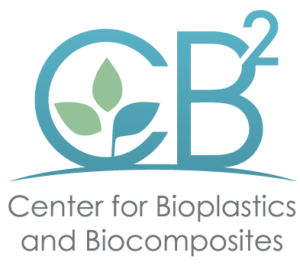 Dr. Jason Locklin, director of the UGA New Materials Institute, was one of the presenters.
Dr. Jason Locklin, director of the UGA New Materials Institute, was one of the presenters.